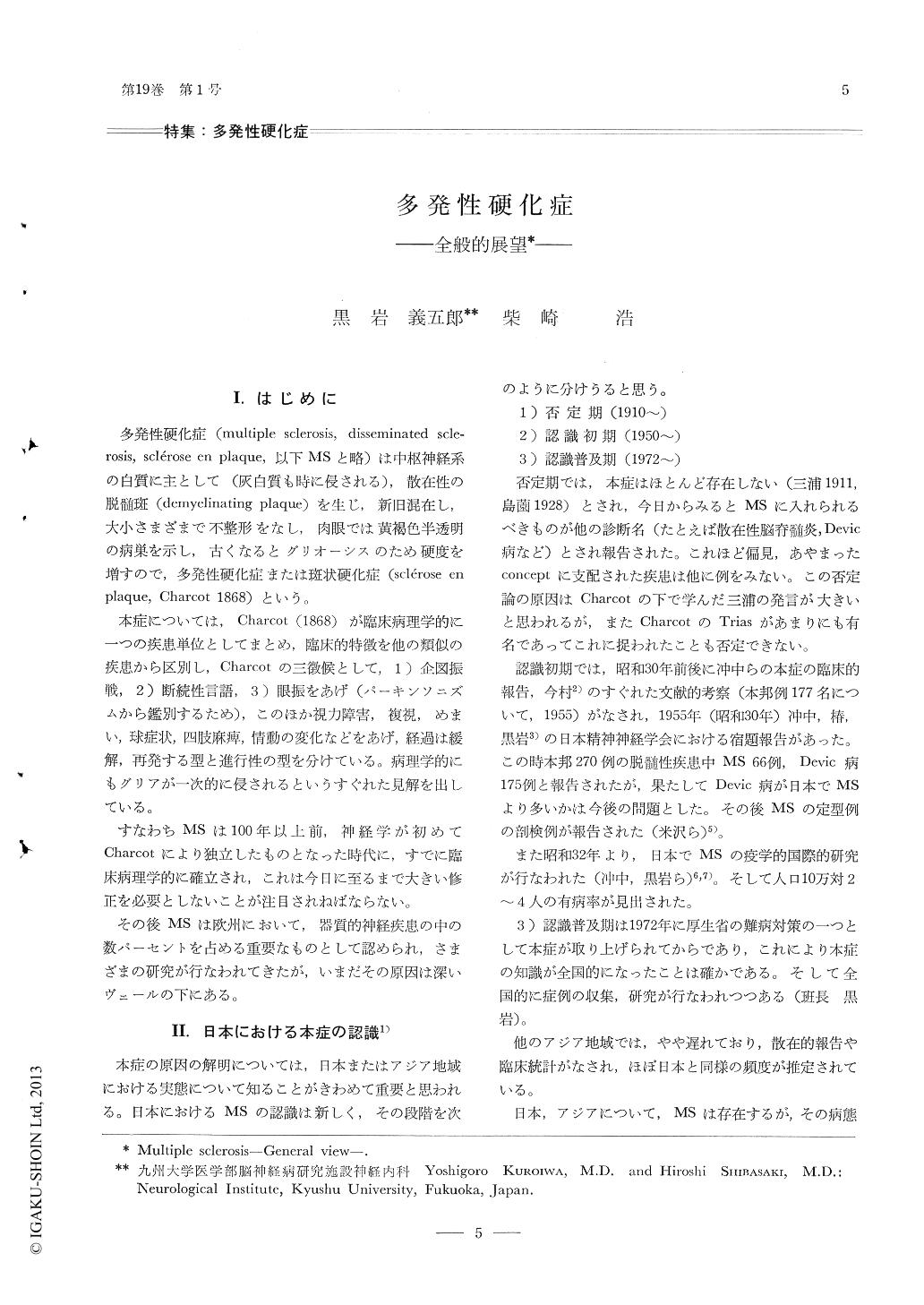Japanese
English
- 有料閲覧
- Abstract 文献概要
- 1ページ目 Look Inside
I.はじめに
多発性硬化症(multiple sclerosis,disseminated sclerosis,sclerose en plaque,以下MSと略)は中枢神経系の白質に主として(灰白質も時に侵される),散在性の脱髄斑(demyelinating plaque)を生じ,新旧混在し,大小さまざまで不整形をなし,肉眼では黄褐色半透明の病巣を示し,古くなるとグリオーシスのため硬度を増すので,多発性硬化症または斑状硬化症(sclerose en plaque,Charcot 1868)という。
本症については,Charcot(1868)が臨床病理学的に一つの疾患単位としてまとめ,臨床的特徴を他の類似の疾患から区別し,Charcotの三徴候として,1)企図振戦,2)断続性言語,3)眼振をあげ(パーキンソニズムから鑑別するため),このほか視力障害,複視,めまい,球症状,四肢麻痺,情動の変化などをあげ,経過は緩解,再発する型と進行性の型を分けている。病理学的にもグリアが一次的に侵されるというすぐれた見解を出している。
Existence of multiple sclerosis (MS) in Japan had not been believed until early 1950's, when Okinaka and his colleagues began finding Japanese patients with MS. In 1955 Okinaka et al. studied 270 Japanese cases with demyelinating diseases, which were collected from the whole country, and reported a predominance of neuromyelitis optica (Devic's disease) in Japan. Since MS Research Committee (Chairman; Y. Kuroiwa) was organized by the aid of Japan Ministry of Health and Welfare in 1972, the existence of MS has became recognized throughout the country.

Copyright © 1975, Igaku-Shoin Ltd. All rights reserved.


